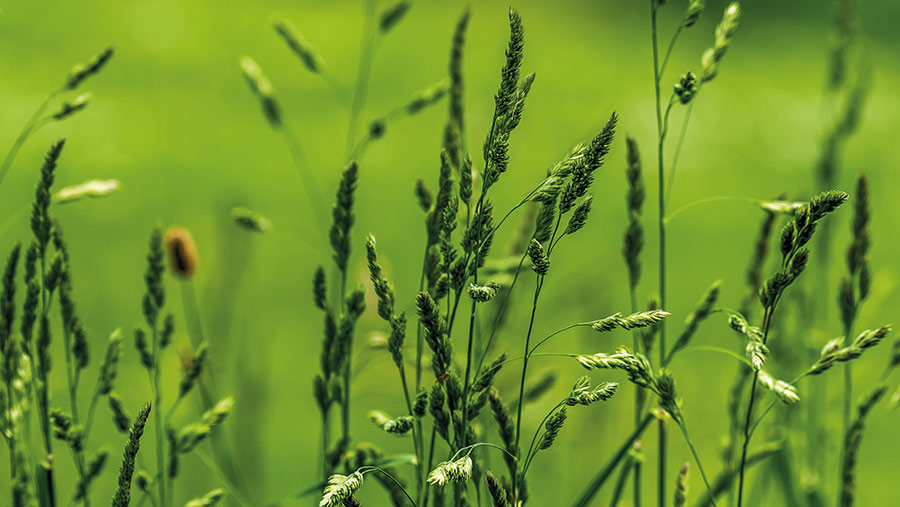Advice on coping with feed shortage as heat burns off grass
 Legumes and herbs, cocksfoot (pictured) and timothy are still growing © AdobeStock/Terence
Legumes and herbs, cocksfoot (pictured) and timothy are still growing © AdobeStock/Terence Farmers at the Royal Welsh Show were growing increasingly concerned about the dry weather and lack of grass.
Several farmers from across the UK – from Northumberland to Cheshire and South Wales – said grass had burnt off or growth rates had plummeted, and they were being forced to add supplementary feed.
NFU Cymru deputy president Abi Reader said the extreme heat had caused milk yields to drop three litres a head at her family farm near Cardiff.
See also: How a dairy farmer manages challenging grazing conditions
“Over the past four or five days, the impact the heat is having on our milking herd is getting quite extreme. We are full-on buffer feeding now,” she said.
Tom Harrison, from Moralee Herefords in Northumberland, said he was also struggling.
“We are up in the Tyne Valley, and we have been feeding cattle outside for four weeks now. We are on dry land – sand and gravel – and we burn off very quickly in the summer.”
Also at the show was grassland consultant Charlie Morgan, of Grassmaster, who told Farmers Weekly there was real variation in growth rates, but some farms were below 30kg dry matter (DM)/ha daily.
For the latest grass growth and quality figures, go to the AHDB’s knowledge library.
Mr Morgan gave some advice on coping with grass deficits.
1. Bring silage ground into your grass rotation
The good news is that first-cut yields are generally looking good and many farmers did not cut back on fertiliser.
Therefore, there is an opportunity for these farmers to graze some second cut ground and harvest less.
2. Buffer feed
Start supplementary feeding sooner rather than later.
“Animals that don’t put on weight are going to be there for a long time, so if they are close to finishing, get them finished and ease the pressure [on stocking rates],” Mr Morgan said.
Target finishing lambs or growing cattle. If you have not weaned yet, do it now to give youngstock more bite. Dry ewes and cows can then be housed or moved to fields with less cover.
“Dry matters are high, so intakes are good,” he said. “And clover is abundant still, so growth rates should be reasonable – although lambs will probably finish at lighter weights.
“Beef prices are dropping, but they are still [relatively high] versus a kilo of concentrate, and it is worth creep-feeding because the bottleneck will get tighter as the season goes on.”
3. Speed up grazing rotations
Rather than taking grass down to 1,500kg of DM, leave more leaf to improve growth.
“Don’t let grass go to head because then it stops growing,” he said. “Keep grass vegetative to grab moisture and allow good growth.
“Newer pastures and reseeds are more resilient. Legumes and herbs, cocksfoot and timothy are still growing.
“GS4 mixes are outstripping everything else this year on yield. It’s an ugly-looking crop but it is yielding exceptionally well because it has deeper rooting structures bringing up that water that’s still there.”
4. Wait to establish new crops
As a rule, brassica crops should be established by 25 July, but Mr Morgan advises waiting for rain.
“If you put it in [now] it is not going to do anything, so you might just as well keep it in the bag for a bit longer.
While later sowing would affect yield, sowing now carried a risk of losing seed to pest damage, or seed could germinate with a drop of rain and then burn off.
“You’ve got to watch the weather forecast and do your groundwork well.
“Rolling is critical before and after seeding to capture the moisture that’s there. Seed-beds must be light and fluffy.”
Minimum tillage is preferable to preserve moisture, but where ploughing was required Mr Morgan advised getting the whole process done as quickly as possible to prevent moisture loss.
